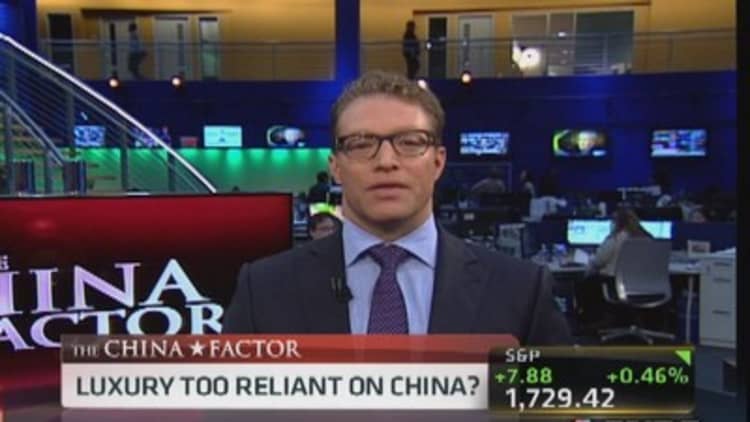Chinese consumers are undergoing a rapid evolution in taste, ditching flashy logos for more understated luxury products, according to the heads of several global luxury brands.
"There's one thing we have to watch happening in China, which is logo fatigue," said Gildo Zegna, CEO of Ermenegildo Zegna Group, which has 80 stores in 36 cities across China, at the International New York Times S.E.A of Luxury Conference on Thursday.
"It took 20 years to get this phenomenon in Japan, and it's taking less than 10 years in China, and it's going to take even less in Southeast Asia. We have to be careful not to become logo driven, because the customer wants style and sophistication," Zegna said.
(Read more: Top 2% ofChinese account for third of world luxurysales)
As Chinese consumers become more discerning, their mindset that costlier products are of higher quality is fast disappearing, said experts.
"People say the Chinese consumer is affluent and can spend a lot of money, but they are changing, they are changing very fast. We're extremely sensitive to the velocity of change." said Patrick Zhong, head of global investments and strategies at Fosun - China's largest privately owned conglomerate - which acquired a 35 percent stake in Italian menswear manufacturer Caruso in September.
"There are 550 million people online every day, they get information through the internet and their mobile devices, and travel around the world," he added.
(Read more: Qatar named fastestgrowing luxury market amid China slowdown)
While growth in luxury spending in China is expected to moderate to 2.5 percent this year, down from 20 percent in the previous year, according to Bain, the country remains a key force in the global luxury market.

China accounts for about a third of the world's luxury consumption, which includes everything from cosmetics to private jets, jewelry and accessories like watches and handbags, according to consultancy A.T. Kearney.
It's no wonder that Chinese consumers are having a growing influence on the product strategies of luxury brands, said Andrew Keith, president of luxury multi-brand retailer Lane Crawford.
Finding new markets in China
As growth in luxury spending peters out in the major cities in China, brands are focusing their attention to the country's tier two and three cities for new opportunities.
(Read more: Luxury'shottest growth market: The US)
Michele Norsa, CEO of Salvatore Ferragamo, told CNBC he plans to add more stores in smaller Chinese cities in the near future.
"The spending power of consumers in tier two and three cities is at the same level as tier one. They are real fashion customers, they want style," said Keith of Lane Crawford.
This strategy has paid off for Zegna, which derives one-third of its sales in Asia from second and third tier cities in the mainland, including Harbin, Chongqing, Changsha and Wuhan. The remaining two-thirds of revenue come from tier one cities in the country, and the rest of Asia.


